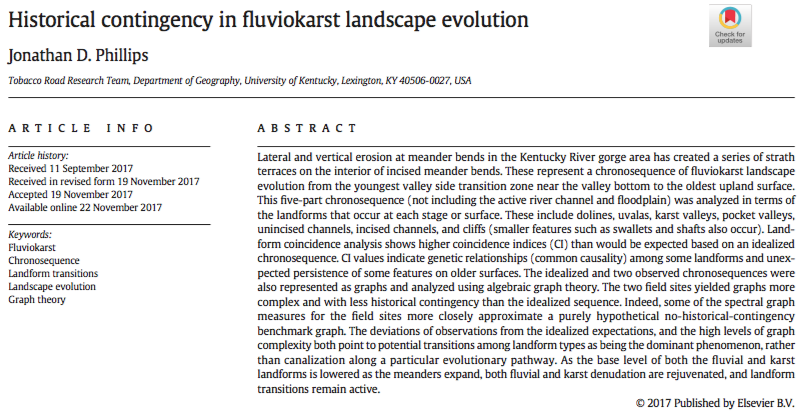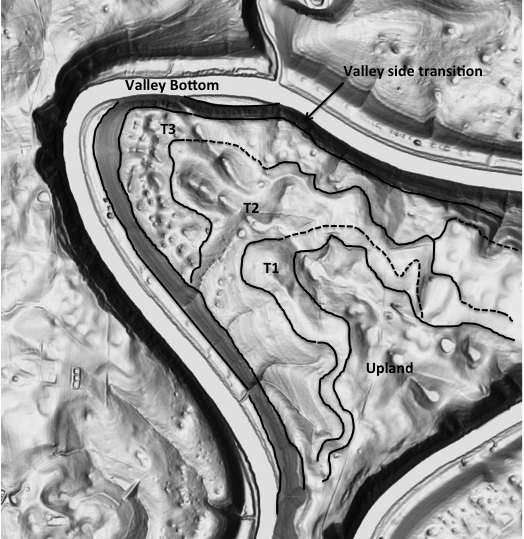FLUVIOKARST CHRONOSEQUENCES
Historical contingency in fluviokarst landscape evolution was just published in Geomorphology 303: 41-52. When I first came to central Kentucky in 2000 I began noticing the strong contrasts in landscape and landform development on inner vs. outer Kentucky River incised meander bends. Investigating this and related phenomena has occupied me off and on ever since. Only a few years ago I realized that given the nature of bend development over the past 1.5 Ma or so, the bend interiors represent a chronosequence of landforms. This paper exploits those chronosequences, using graph theory, to explore the role of historical contingency.


Chronosequence of strath terraces (T1, T2, T3) and other geomorphic surfaces at Polly’s Bend, Kentucky. The surfaces nearest the river are youngest; those farther away are oldest.

Chronosequence of strath terraces (T1, T2, T3) and other geomorphic surfaces at Bowman’s Bend, Kentucky. The surfaces nearest the river are youngest; those farther away are oldest.
Reference: Phillips, J.D., 2018. Historical contingency in fluviokarst landscape evolution. Geomorphology 303: 41-52.
Previous blog posts on related topics:
Evolution of Polly's Bend: Initial conditions, bend extension
Karstification of Bowman's Bend
Landform transitions in a fluviokarst landscape
Posted 5 February 2018
